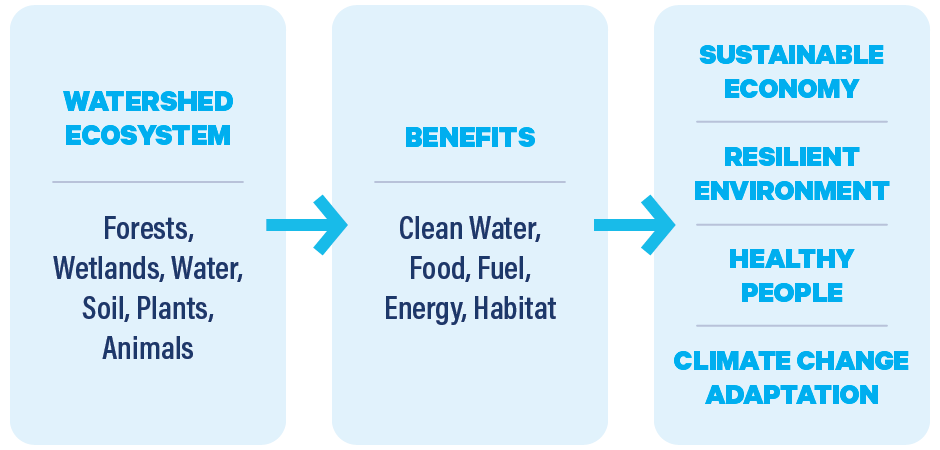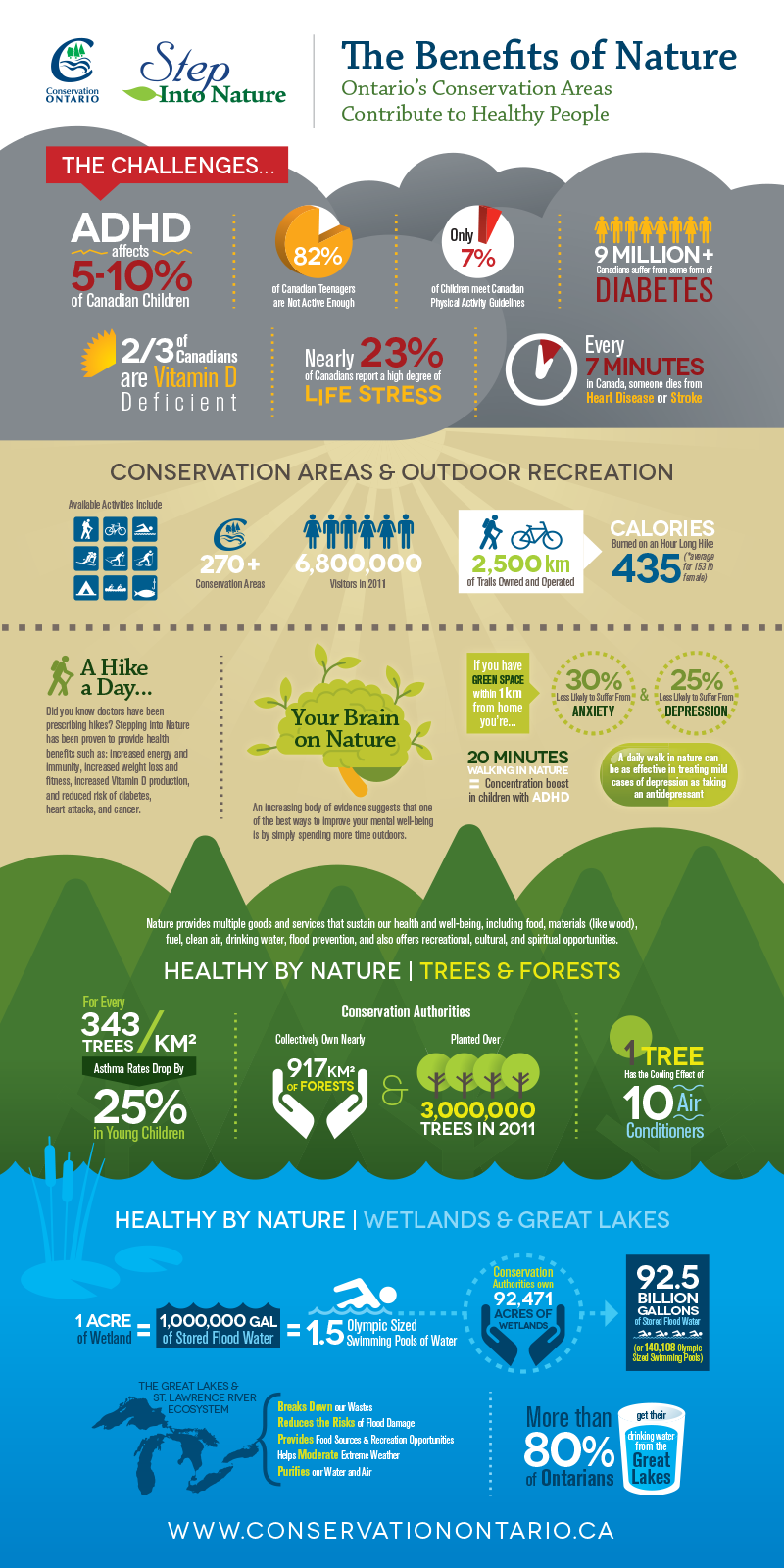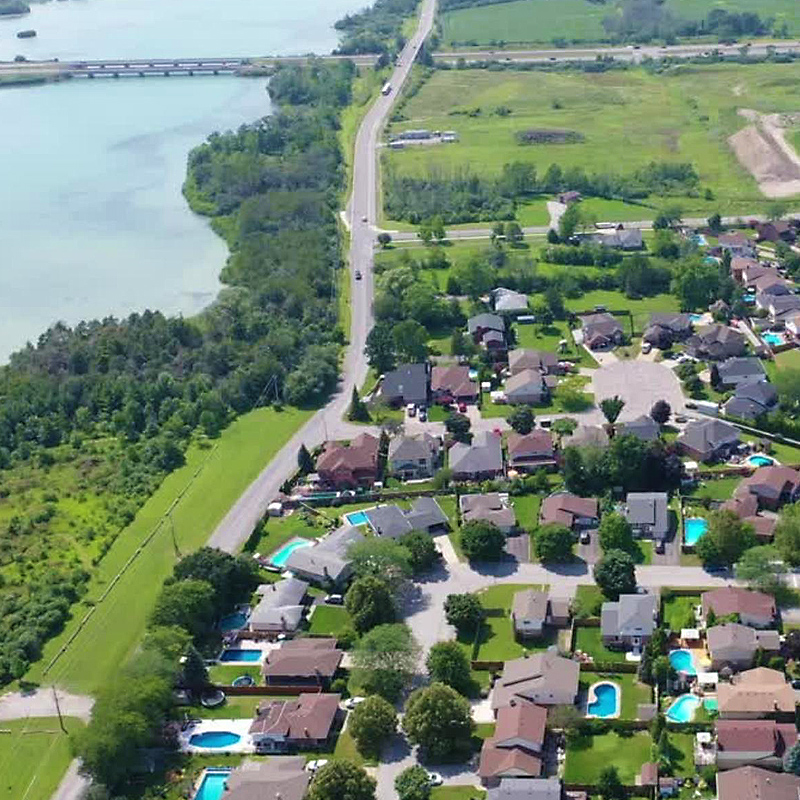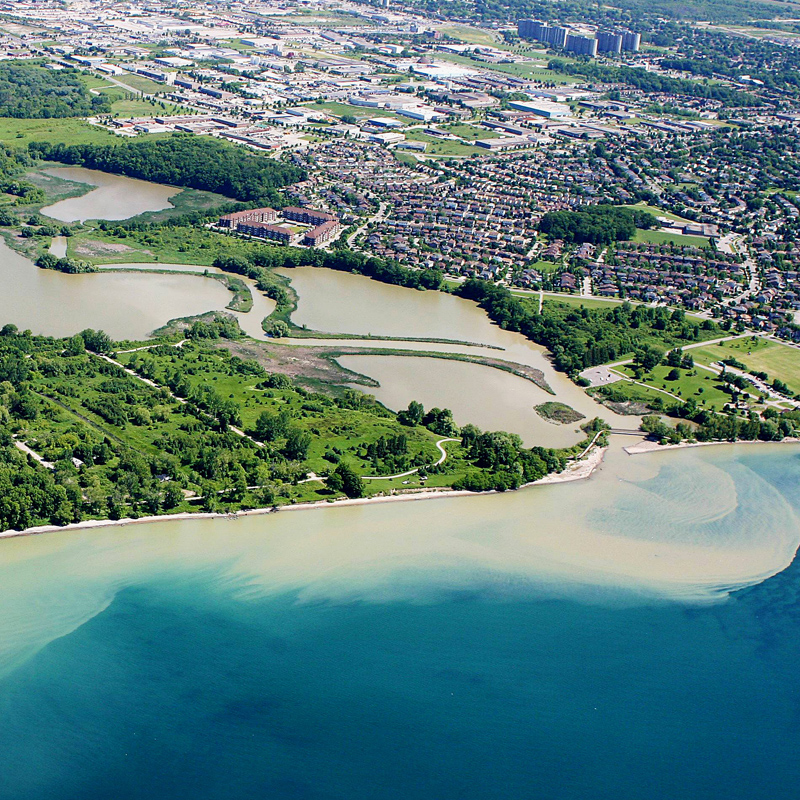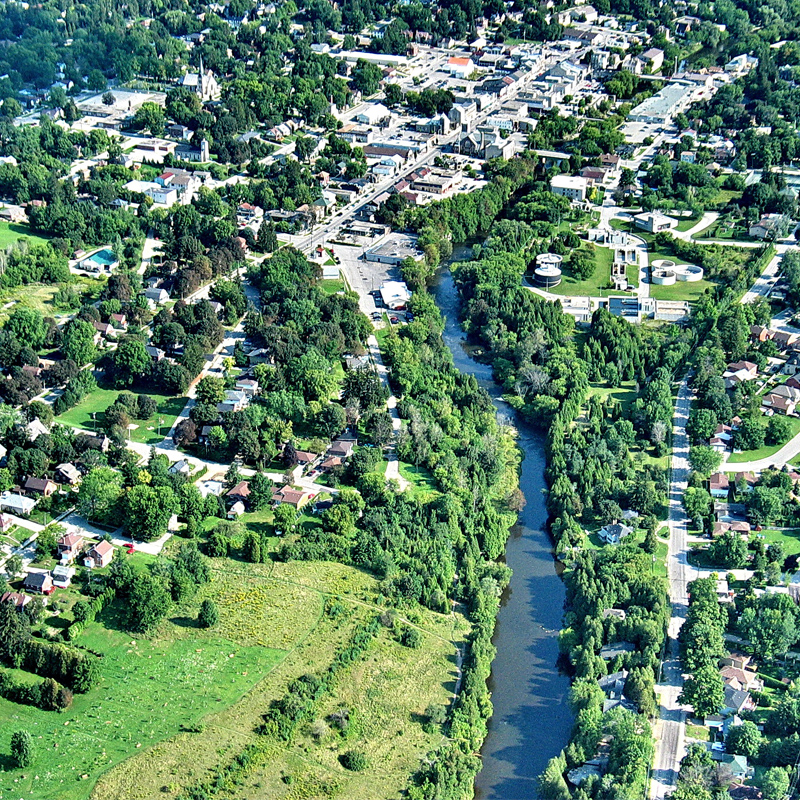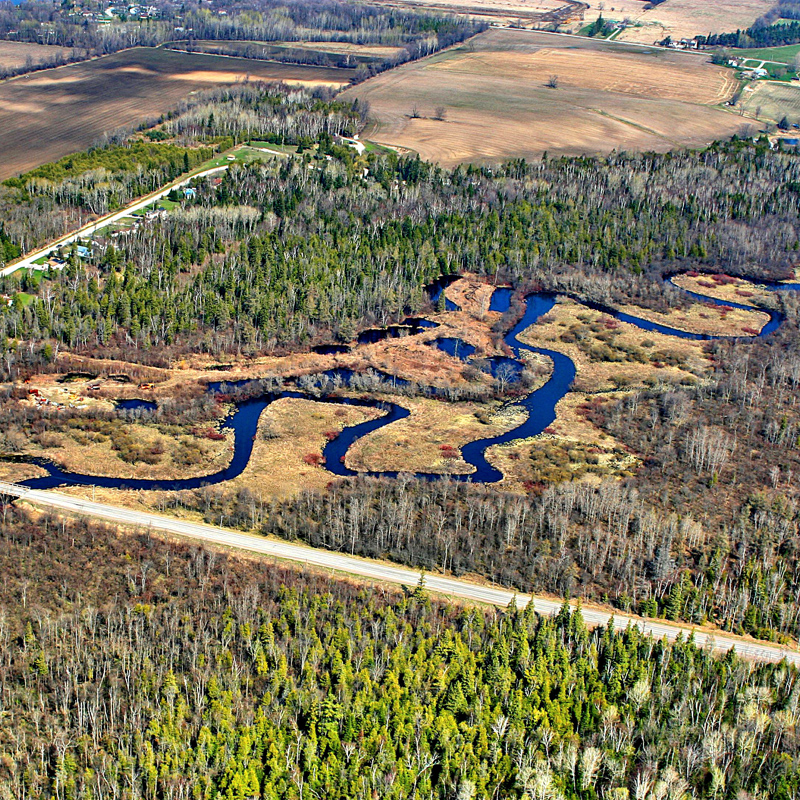
Human Health
A healthy watershed provides safe drinking water and health soils for food production. Green infrastructure such as forests, grasslands, wetlands and other plants helps us to adapt to the impacts of climate change more easily by cooling the air and absorbing greenhouse gas emissions. Natural areas such as conservation areas that are found throughout our watersheds provide lots of recreational for people to keep active and improve mental health.

Ecological Health
A healthy watershed conserves water, improves air quality, promotes streamflow, supports sustainable streams, rivers, lakes, and groundwater sources and also provides important habitat for insects (pollinators), wildlife and plants.

Economic Health
A healthy watershed provides numerous natural assets that support our economy. Sustainable water sources are needed for agriculture, industry and household uses. Forests, wetlands and other green infrastructure help to reduce the costly risk of flooding and erosion events as well as directly support fisheries, forestry, agriculture and tourism. The Great Lakes themselves provide transportation, recreation and manufacturing goods and services, contributing billions to Ontario’s economy and a drinking water source for eight million people. They provide raw power and cooling water for the province’s energy supply as well.
Overall, the healthier our watersheds are, the better to build Ontario’s resilience against growing climate change impacts.


